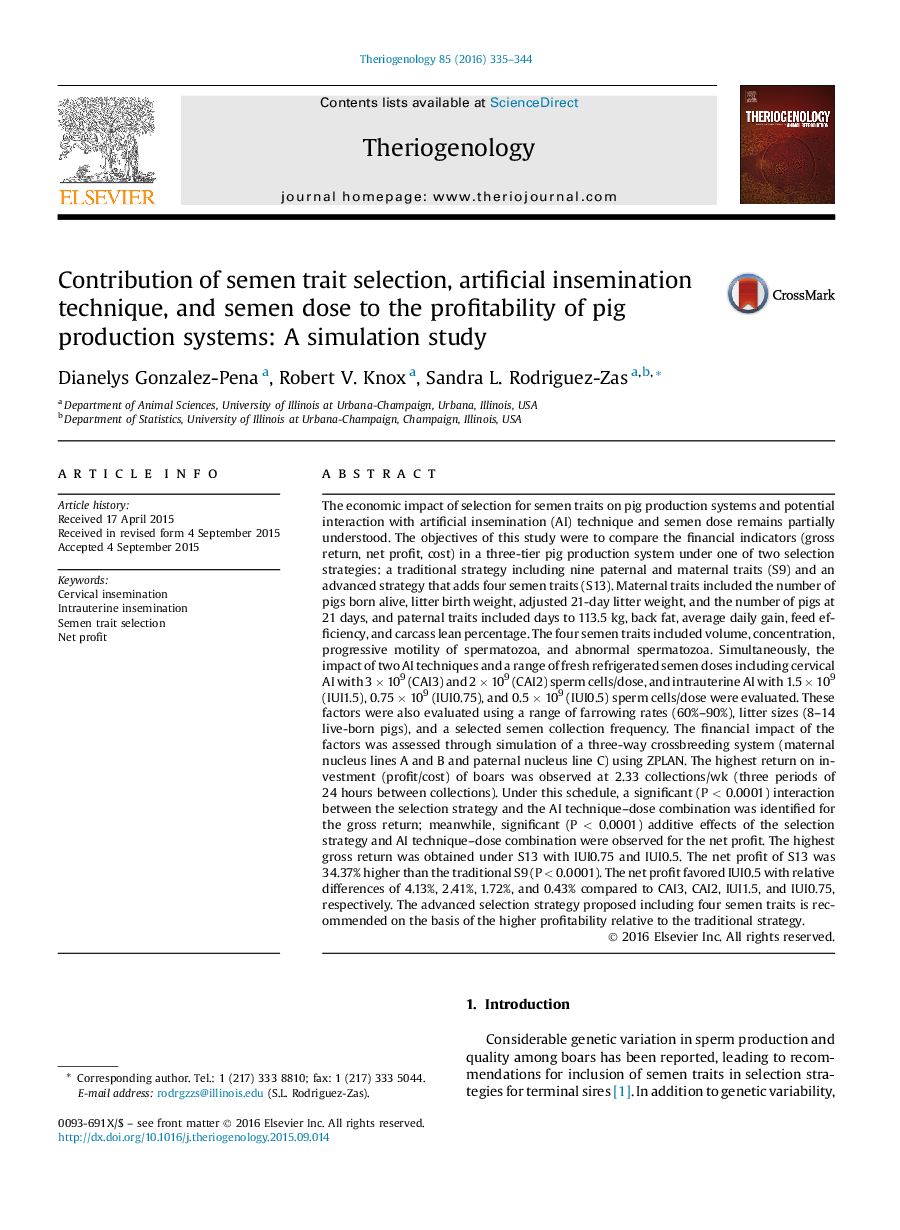| کد مقاله | کد نشریه | سال انتشار | مقاله انگلیسی | نسخه تمام متن |
|---|---|---|---|---|
| 2094855 | 1082055 | 2016 | 10 صفحه PDF | دانلود رایگان |
The economic impact of selection for semen traits on pig production systems and potential interaction with artificial insemination (AI) technique and semen dose remains partially understood. The objectives of this study were to compare the financial indicators (gross return, net profit, cost) in a three-tier pig production system under one of two selection strategies: a traditional strategy including nine paternal and maternal traits (S9) and an advanced strategy that adds four semen traits (S13). Maternal traits included the number of pigs born alive, litter birth weight, adjusted 21-day litter weight, and the number of pigs at 21 days, and paternal traits included days to 113.5 kg, back fat, average daily gain, feed efficiency, and carcass lean percentage. The four semen traits included volume, concentration, progressive motility of spermatozoa, and abnormal spermatozoa. Simultaneously, the impact of two AI techniques and a range of fresh refrigerated semen doses including cervical AI with 3 × 109 (CAI3) and 2 × 109 (CAI2) sperm cells/dose, and intrauterine AI with 1.5 × 109 (IUI1.5), 0.75 × 109 (IUI0.75), and 0.5 × 109 (IUI0.5) sperm cells/dose were evaluated. These factors were also evaluated using a range of farrowing rates (60%–90%), litter sizes (8–14 live-born pigs), and a selected semen collection frequency. The financial impact of the factors was assessed through simulation of a three-way crossbreeding system (maternal nucleus lines A and B and paternal nucleus line C) using ZPLAN. The highest return on investment (profit/cost) of boars was observed at 2.33 collections/wk (three periods of 24 hours between collections). Under this schedule, a significant (P < 0.0001) interaction between the selection strategy and the AI technique–dose combination was identified for the gross return; meanwhile, significant (P < 0.0001) additive effects of the selection strategy and AI technique–dose combination were observed for the net profit. The highest gross return was obtained under S13 with IUI0.75 and IUI0.5. The net profit of S13 was 34.37% higher than the traditional S9 (P < 0.0001). The net profit favored IUI0.5 with relative differences of 4.13%, 2.41%, 1.72%, and 0.43% compared to CAI3, CAI2, IUI1.5, and IUI0.75, respectively. The advanced selection strategy proposed including four semen traits is recommended on the basis of the higher profitability relative to the traditional strategy.
Journal: Theriogenology - Volume 85, Issue 2, 15 January 2016, Pages 335–344
